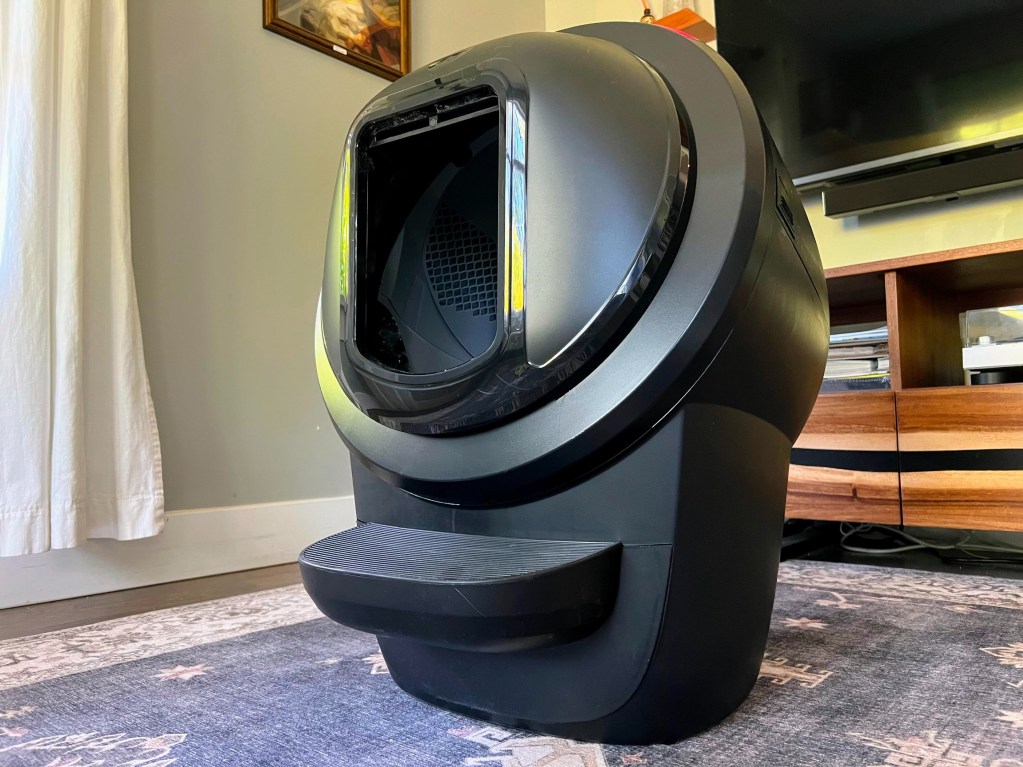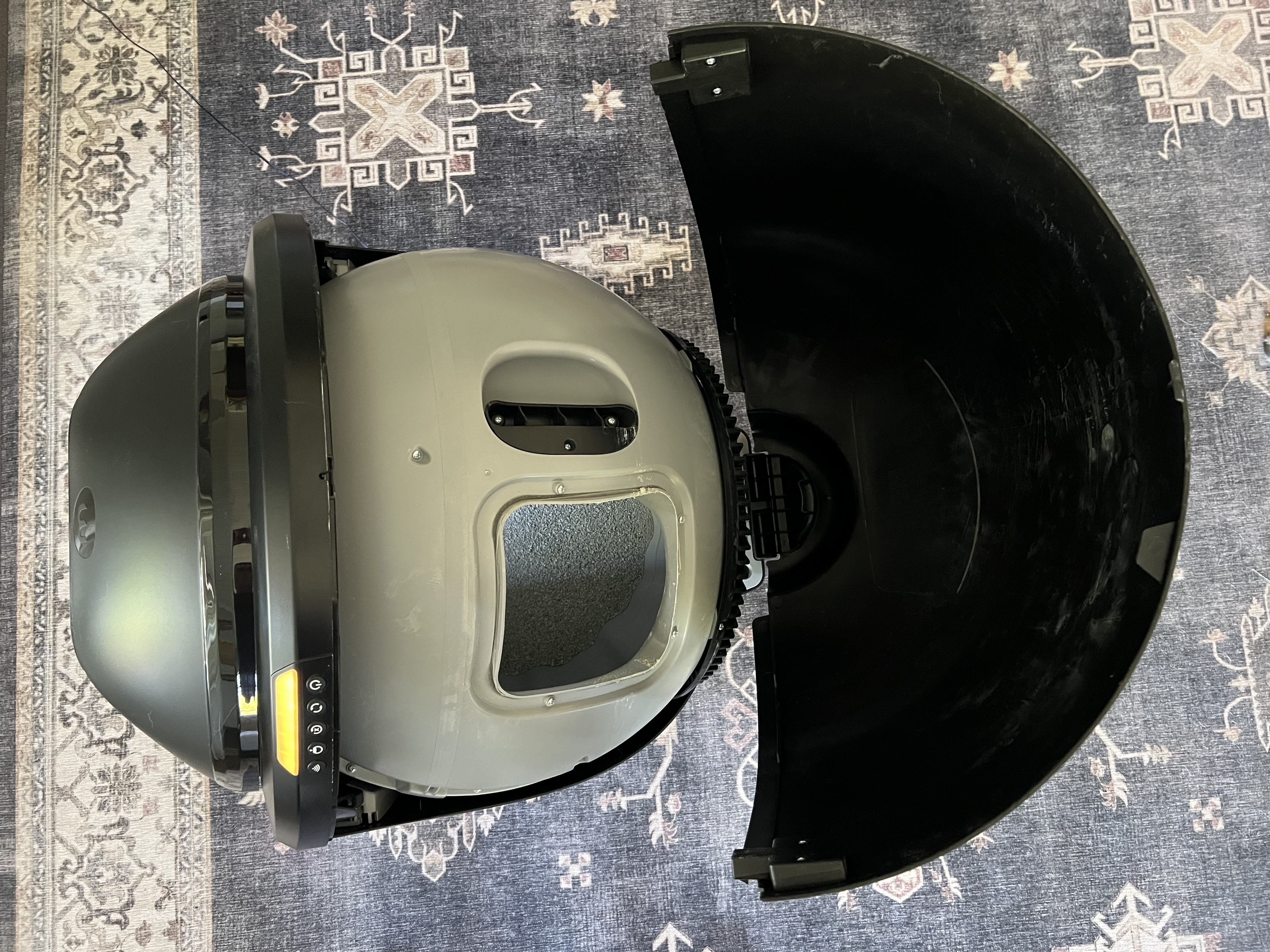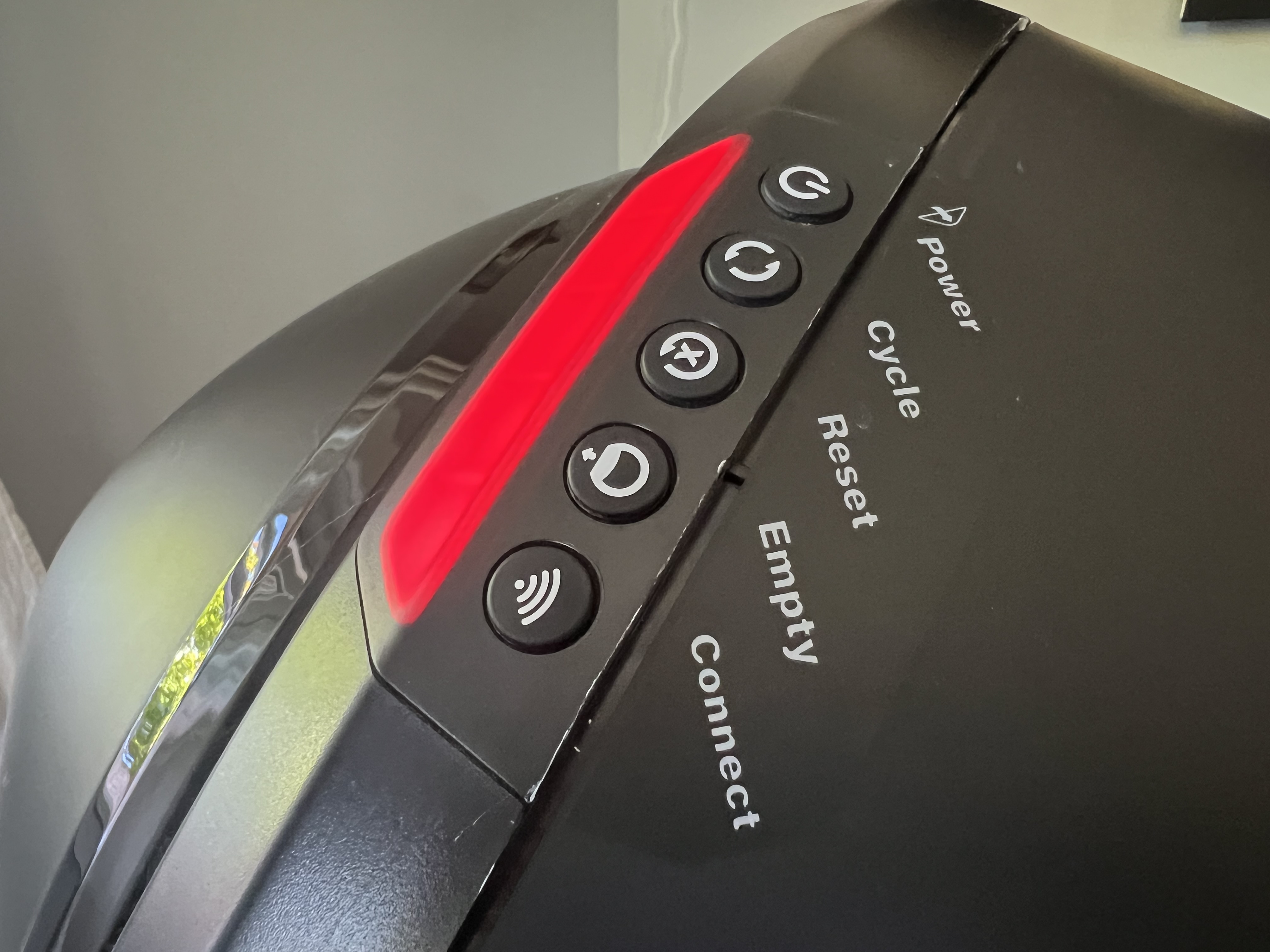
Cats poop inside your house. No matter how cute and otherwise fastidiously clean they may be, there is no escaping that fundamental truth and all its attendant horrors. The smell. The scooping. The litter tracking.
So when my wife and I adopted our cat Niles six months ago, I knew I needed to enlist a robot for this drudgery. Like robot vacuums and mops, I was sure an automated litterbox could take the sting out of scooping litter. Off we marched to Petsmart to buy the PetSafe ScoopFree for about $200. And back we marched to return it two weeks later.
It’s not that it didn’t work, sometimes, but it had a habit of … how do I say this? Niles’ poop got jammed in the rake that sweeps over the litter. Over and over and over. I took it back, and as the PetSmart cashier interrogated me about the consistency of my cat’s bowel movements in the return line, and a queue backed up behind me, I decided it was time to bring out the big guns. We got the Litter-Robot 4.
Turn it upside down

For the uninitiated, Litter-Robots are the Teslas of automatic litterboxes, and I’m not trying to imply the CEO is a psychopath. Whisker, the company that makes the Litter-Robot, pretty much invented the “self-sifting” category in 1999 and has maintained its edge by meticulously updating its offerings with the times. Its latest offering, the Litter-Robot 4, is smaller, quieter, and smarter than its predecessors. As you’d expect it to be, for its princely $700 price tag.
Expensive? Yes. Worth it? Also yes.
Unlike the horizontal rake action of the PetSafe, the Litter-Robot is like a clothes dryer for your cat’s excrement. Stay with me, it’s a good thing: A layer of fresh litter sits at the bottom of a drum, Niles does his business, and when he’s done the entire drum rotates. A grate sifts clean litter from waste, which tumbles into a sealed garbage bin beneath, where its hideous odors remain sealed from the rest of your house. The clean litter returns to the bottom of the drum. For such a potentially messy operation, it’s shockingly graceful and quiet.
The nitty gritty on kitty litter
The Litter-Robot ostensibly works with any clumping litter, but we tried using hippie corn kernel litter to start, and it was too large to properly sift out. Switching to a standard clay litter did the trick, and switching to Litter-Robot’s own formula seemed to last even longer between swap outs. As Litter-Robot CEO Jacob Zuppke explained to me, bentonite clay content is really the only thing that matters in selecting a litter, and any high-quality litter will do.
My reservations that Niles might be too scared to enter the Litter-Robot were unfounded. Not only did he delight in stepping into the drum, he now spends 10 minutes at a time in there, scraping and pawing around like a kid in a sandbox. It’s possible he has a little Tonka truck in there. Though he ended up kicking a lot outside the robot at first, the newly introduced add-on shield has resulted in dramatically less spillage.
Probably smarter than your cat

The Whisker app not only tracks how often Niles uses the Litter-Robot, but it also measures his weight with its SmartScale feature. After some erratic early measurements, we ordered a $30 carpet tray that allows it to measure accurately even on soft surfaces, which fixed the problem entirely. Tray or not, I’m not sure I’d pay extra for SmartScale. While it’s novel at first, it just isn’t actionable enough in most situations. My wife is a veterinarian and even she’s not that interested that Niles was 8.1 pounds at 5:56 a.m. and 7.8 pounds at 11:10 a.m. He pooped.
More pragmatically, the app can notify you when the waste drawer is full, which takes about two weeks or so. Emptying it is about as pleasant as such a chore can be: Slide the drawer out, lift up the bag full of turds, and get it outside as fast as humanly possible. This is not a task you want to dawdle with for olfactory reasons, but it will make you appreciate just how much smell the Litter-Robot manages to contain inside the machine with its charcoal filter.
Every couple months, the robot needs a more thorough cleaning, which involves popping out the orb-shaped litter drum, scrubbing it down with soapy water, and hosing it out. Dreadful as it sounds, it’s a 15-minute task.
Besides all the accessories you can kit out your Litter-Robot with, I was impressed to find a library of parts for the last-generation Litter-Robot 3, which came out in 2015. For a device that costs as much as a kitchen appliance like a dishwasher, it’s refreshing to see Whisker following the appliance model of long-term support, rather than the gadget model (“throw it away and buy a new one in two years”).
The price of convenience
Don’t let my whinging about the price mislead you: I did not pay for my Litter-Robot 4, which was provided for review, and I’m pretty sure Jenna Fischer didn’t either, but I share her enthusiasm for it. If your life includes smelling cat poop and manually scooping it every day, you could say it’s a literal life changer. My Narwal Freo has been a life changer, too, but if you forced me to choose, I might go home with the Litter-Robot 4. It’s that good.
And in the hopefully unlikely event that mine ever breaks, I will be cringing and prying out my credit card to get another, because there’s simply no way I can go back to the plastic pan.


